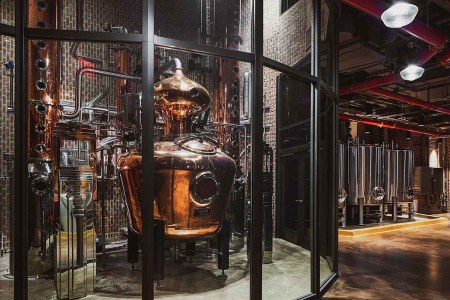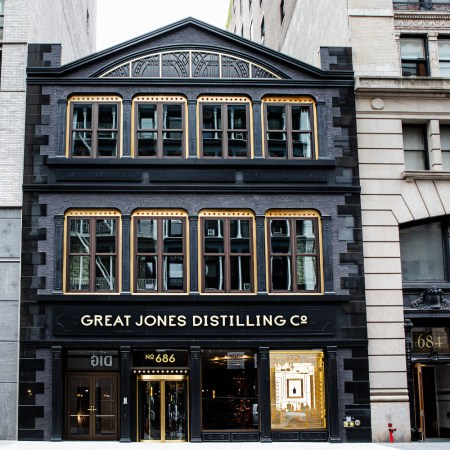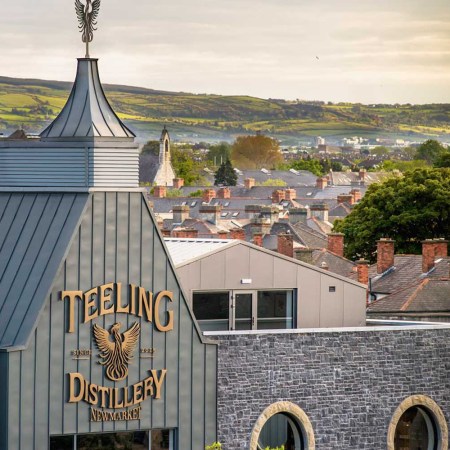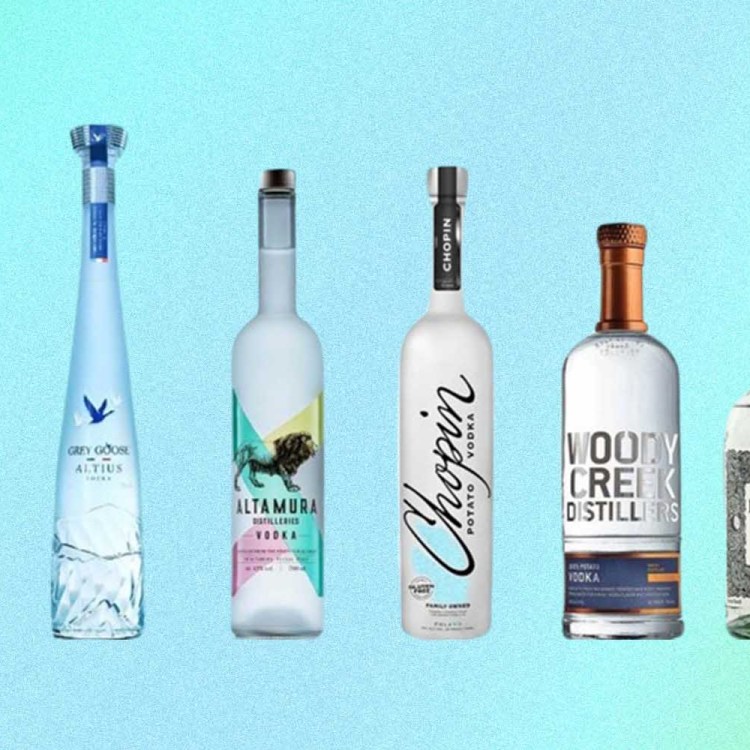Earlier this year, Amalga Distillery in Juneau, Alaska, and Barr Hill Distillery in Montpelier, Vermont, were named semifinalists for a 2024 James Beard Outstanding Bar award, and the latter moved on as one of the country’s five finalists. This wasn’t for bars in distilleries — this was an award for best bar, period. These nominations pose a two-part question: first, should we all book trips to Alaska and Vermont? And second, when did distilleries start taking cocktails and the bar experience as seriously as their spirits?
Cocktails and liquors are intrinsically linked, but traditionally, even during this modern golden age of cocktails we’ve been enjoying for the past 20 years, the two entities stayed in their lanes. Distilleries made the spirits and bars made the cocktails. Today, the lines have blurred, and distilleries across the country are opening craft-focused bars with thoughtful menus and the necessary talent to keep them running.
At Barr Hill Distillery, visitors can sample vodkas and gins straight or hit the bar to try those same liquors in cocktails, alongside a full food menu. Drinks include the Solera Exchange, which is made with sherry barrel-aged gin, pamplemousse, Oloroso sherry and walnut liqueur, and the Four Amaro Black Manhattan, featuring Tom Cat Gin, rye whiskey, a house amaro blend, orange bitters and Angostura bitters.

“Our mission is to reconnect cocktail culture with agriculture,” says Patrick Amice, General Manager of Hospitality Operations for Barr Hill Distillery. Opening a bar was a consumer-facing way to do that, and it allows guests to interact with the brand in multiple ways, from distillery tours to after-work drinks. Amice says the bar offers affordable classics like the Gin & Tonic and Bee’s Knees, as well as its more adventurous cocktails to give locals and visitors plenty to drink when they come in.
When Great Jones Distilling Co. opened in 2021, it became the first legal whiskey distillery in Manhattan since Prohibition. And rather than the industrial, large-scale, hard-hat-required operation you might find in Kentucky or Tennessee, Great Jones is a series of good-looking spaces, from the still room to the tasting room and restaurant. The bar offers a weeknight happy hour and a $25 burger and Old Fashioned special, several monthly events and a memorable drink menu broken into categories: Tall & Refreshing and Classic & Spirit Forward. Cocktails include Our Little Secret with rye, applejack, pineapple, tamarind, orgeat and lime, and Millionaire’s Row with bourbon, sweet vermouth, a couple of aperitivi and tobacco bitters.
The holy trinity of distillery, bar and restaurant came from Great Jones’s desire to offer a holistic experience. “We wanted visitors to not only taste our whiskey but also to immerse themselves in the culture and craftsmanship behind it,” says Rodrigo Braun, the Brand Experience Director for Great Jones Distilling Co.
Inside the First Whiskey Distillery In Manhattan Since Prohibition
The Great Jones Distilling Co. is an architectural triumph. Bourbon’s good, too.Nearest Green Distillery, which honors the first-known African American master distiller of the same name, has the unique distinction of housing the world’s longest bar. Humble Baron’s bar top measures a whopping 518 feet, and with 202 bar stools winding through the space, you could forgive the venue for only slinging whiskey shots. But that’s not the case — Humble Baron serves a full food and cocktail menu, and the bar program was created in partnership with Gin & Luck, the hospitality company behind the famed bar Death & Co.
Most of the cocktails feature Uncle Nearest whiskey, like the Sandcreek Farm Julep, which also calls for brandy, raspberry-chamomile shrub and Angostura bitters. But others skip the flagship spirit entirely and instead feature rum, tequila or vodka in comprehensive packages, like the Yellow Rose, made with vodka, blanc vermouth, lime, pineapple and peach liqueur.
“Consumers are increasingly seeking exceptional experiences wherever they go, and superior cocktails have become an essential part of distillery visits, with guests now expecting not just quality spirits but also expertly crafted cocktails that showcase the versatility and craftsmanship of the spirits,” says Keith Weaver, founder of Humble Baron and co-founder of Uncle Nearest.

He expects this trend to continue and for distilleries to expand their purview beyond cocktails to offer guests a multifaceted experience. At Humble Baron, this means a food menu of Southern dishes created by chef, television host and James Beard nominee G. Garvin, plus an indoor-outdoor stage that’s welcomed the likes of Post Malone and Eddie Vedder.
Great cocktails are popping up at distilleries across the country, from Michter’s The Bar at Fort Nelson and Rabbit Hole’s newly renovated Overlook Bar in Louisville, Kentucky, to The Family Jones Spirit House in Denver and J. Rieger’s Electric Park Garden Bar in Kansas City.
But this isn’t a uniquely American phenomenon. Copenhagen Distillery’s on-site bar serves classic and original cocktails with sustainability in mind, merging its spirits with housemade cordials, vermouths and bitters made from production leftovers. At City of London Distillery — makers of Whitley Neill Gin — the bar looks out over the copper stills and bartenders pour standard drinks like Martinis, Negronis and Gin & Tonics.
Distilleries are already breeding grounds for what goes into your glass, so it only makes sense that more are getting into the cocktail game, especially as craft cocktails continue their march toward ubiquity. For distilleries, it means added revenue and a new way to capture customers. And for customers, it means another place to score well-made drinks — the very definition of a win-win.
Join America's Fastest Growing Spirits Newsletter THE SPILL. Unlock all the reviews, recipes and revelry — and get 15% off award-winning La Tierra de Acre Mezcal.

























